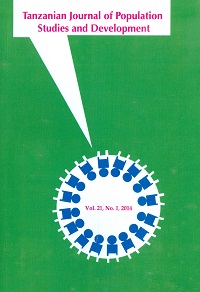Income Elasticity of Health Expenditures in Tanzania: An Application of Concentration Curves
Abstract
Income elasticity of demand is important because it gives insight into the response of consumers to changes in real income, whether this emanates from changes in actual income or from the changes in the price of a commodity. Income elasticity of health is particularly important because it gives an indication on how people would react to the changes in the costs of medical care. The design of health care financing strategy requires an understanding of the way people responds to the cost of healthcare. Moreover, as suggested by Deaton and Zaidi (2002), a decision on whether household expenditure on health should be included in the consumption aggregate that is used for poverty analysis should depend on the income elasticity of demand for health. In the Tanzania Mainland households ' budget survey health expenditure is routinely excluded from consumption aggregate used for official poverty estimate but income elasticity of health has never been estimated to assess whether this exclusion is warranted or not. This paper offers some ordinal estimates of income elasticity of demand for health in Tanzania. This is done by employing the approach proposed by Kakwani (1977) which uses the concentration curves and the Lorenz curves for making inferences on income elasticity. This approach has the advantage in that it suffers no risk of introducing errors emanating from functional misspecification and it also gives global measure of elasticity, unlike the econometric estimation that gives elasticity only at a specified income level. The 2000/2001 and 2007 Household Budget Survey data are used for estimation. The finding is that income elasticity of demand for health is largely between zero and one, except for the population beyond the 0.8 percentile for the years 2000/2001 which has income elasticity greater than one.
References
Araar A and J-Y Duclos (2009) "DASP: Distributive Analysis Stata Package, DASP Version 2 User Manual". Université Laval, PEP, CIRPÉÉ and World Bank.
Deaton A., and S. Zaidi (2002)., "Guidelines for Constructing Consumption Aggregates for Welfare Analysis". World Bank, Washington D.C.
Glewwe, Paul, (1991), "Investigating the Determinants of Household Welfare in Côte d ' Ivoire", Journal of Development Economics, 35, 307-337.
Kakwani N.C. (1977b). "Applications of Lorenz Curves in Economic Analysis". Econometrica, 45, pp.719-727.
O ' Donnell o., Doorslaer E., Wagstaff A., and M. Lindew (2008). Analyzing Health Equity Using Household Survey Data: A Guide to Techniques and Their Implementation. World Bank.


